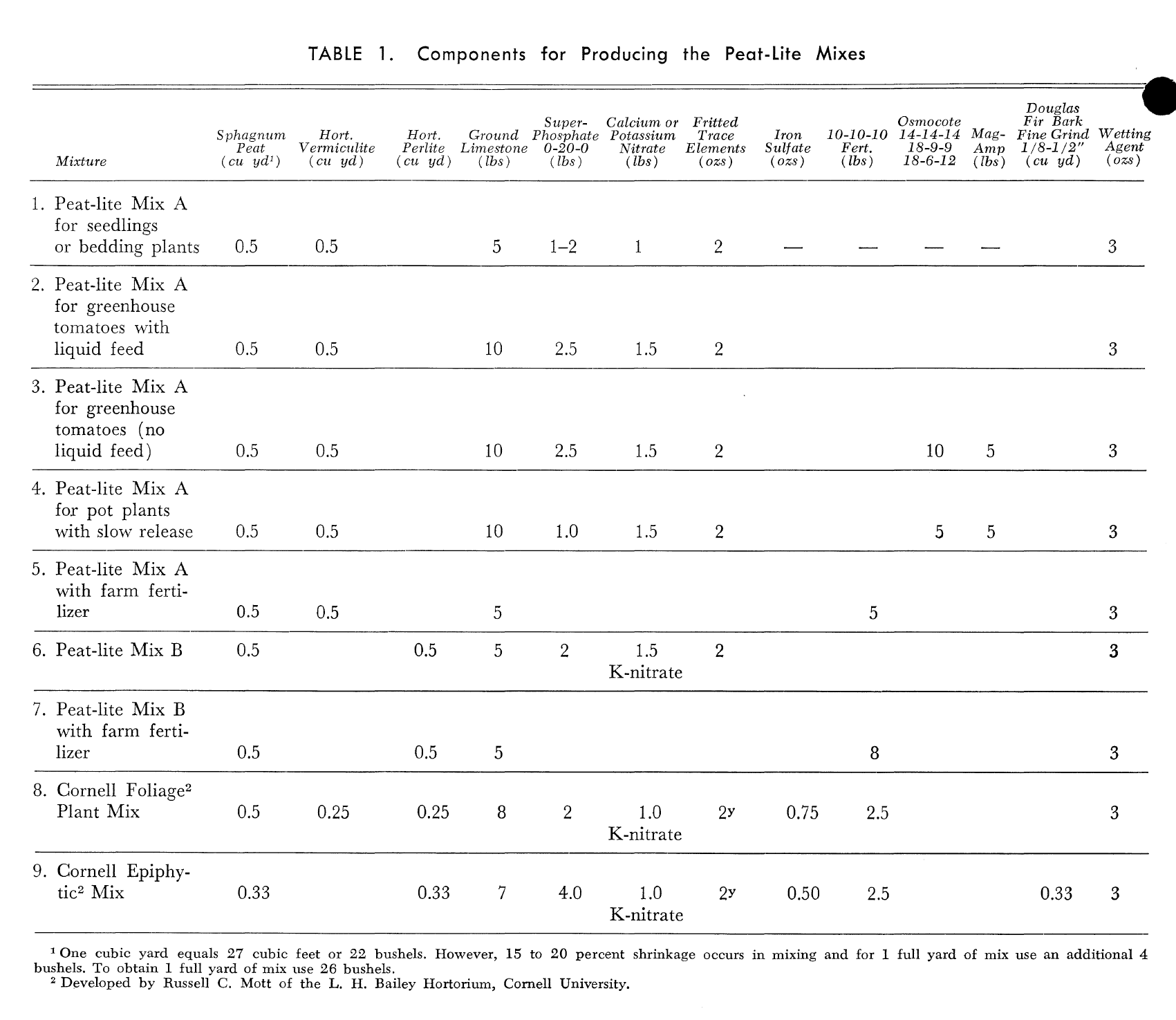Like most of us, you probably never even wondered why we have potting mix. It’s just there in the garden section of your hardware, big box store, or garden shop. Mountainous stacks marketed under many brands and labels – worldwide. Granted, it was created for growing in containers, but man has been growing plants in pots and urns for thousands of years. Yet, standardized potting mix is a very modern invention.
If you wanted to pot a geranium or two in the 1950s, you had to hunt down some “good soil” in the wild, fill up some buckets with your shovel, and cart it home. It would likely have been along the edge of a wooded area where there was steady deposits of leaf litter and twigs (natural compost), but it wasn’t an exact science, and very prone to problems, especially as fall arrived. By then the fluff had gone out of that good soil, turning it into a brick, but winter was coming, the geraniums had served their purpose, and outgrown the pot anyway… time for something fresh and smaller. Like just ready to flower mums, and another trip to that digging spot for some fresh “good soil”. Wonder no more why they call these changes seasonal color. You had to change the soil with the plant.
Greenhouses and nurseries mixed their own potting soil in those days. But shrubs and trees were not potted, they were field-grown, and sold in a ball-and-burlap package. The root balls were still in the field soil, held in place with burlap and twine. If you bought perennials, they were dug to order, and handed to you in a paper grocery sack. The label was handwritten in pencil scrawled on your bags. The only things grown in containers were annuals, poinsettas, house plants, and Easter lilies, and there were no standards for potting media, making bringing your crop to the salable state in good health was a far bigger gamble than it is today.
The USDA Forestry Service attributes the first growing medium as being developed in the 1930s at the John Innes Horticultural Institute in Great Britain. It was called “compost,” and was a mix of loam soil with peat moss, sand, and fertilizers. Soil, however is quite heavy and variable, consistency from batch to batch difficult, if not impossible.
The commercial floriculture industry had many problems trying to grow everything from poinsettas and orchids to flats of petunias and tomato seedlings on a large scale. A reliable, consistent medium was needed, because it’s hard to succeed in a growing business if you keep having crop failures, weed epidemics in the greenhouse, and each pot weighs so much the average citizen doesn’t want to carry it. The first true soilless media was developed by researchers at the University of California in the 1950s, but it was still very heavy, and probably presented problems once plants grown in it were planted in the ground. This was a mix of sand, peat moss, and fertilizer.
So, in the 1960s, a team of horticulturalists at Cornell University invented potting mix – a blend of materials that drained well, allowed air flow to roots, contained no weed seeds, and was light enough than anyone could carry it around. The basis of what we use today in commercial and residential container growing was created by James Boodley and Raymond Sheldrake. While it was commonly known as Cornell Mix in the greenhouse industry, the official name was Cornell Peat-Lite Mix, and there were several variations formulated to certain crops’ needs, and grower preferences.
All variations contained sphagnum peat moss, which was the main ingredient, but the nutrients and additional amendments were altered. Two additional mixes for foliage plants and epiphytes (air plants) were added by 1972, which were developed by R. C. Mott who worked in Cornell’s L. H. Bailey Hortorium. Here’s a screen capture from the Cornell Information Bulletin published in 1972 (click to enlarge):
Of course, fertilizers have been refined and specialized over the years, right along with fine tuning potting mix formulas to arrive at what we use today. There are still mixes out there that are nothing but peat moss with some perlite or vermiculite, but better quality brands will have other ingredients that make them more productive. Some come with organic fertilizers blended in, others with slow release traditional fertilizers, and some hold moisture better than others for those water-loving plants versus those that prefer a drier situation. There are still special formulations for orchids and air plants, but by and large, one bag will allow you to grow just about anything in a container, whether it’s an EarthBox on the patio, or 700 flats of assorted vegetable starts in your greenhouse.
James Boodley passed away in February 2016. He was 88 years old, and spent his working years firmly rooted in horticulture as a professor, and in various association appointments. Cornell crop scientist, Raymond Sheldrake also is known as the father of the double-poly house (twin-walled greenhouses), among other contributions to commercial growing refinements. He was 85 when he passed away in 2008.
Their work in developing soilless potting mixes revolutionized the greenhouse and nursery industry. You could say that Boodley and Sheldrake were also the fathers of modern container gardening.
More Info:
- James Boodley
- Raymond Sheldrake
- Cornell Mix Bulletin (1982 revision)
- Growing Media Alternatives (Forestry Service)
